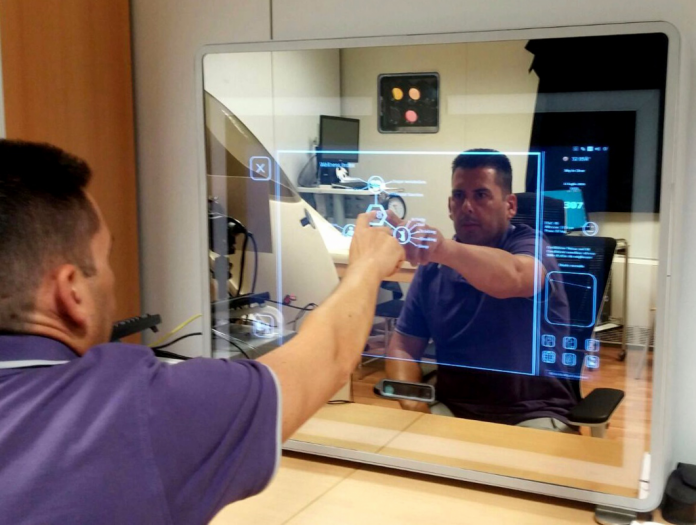Home Search
diabetes - search results
If you're not happy with the results, please do another search
An ounce of prevention, a pound of cure: What makes successful obesity policies?
Philip Sherman, Mary-Jo Makarchuk and Keeley Rose at the Canadian Institutes of Health Research, highlight the need for research to inform successful obesity policies
Obesity is a chronic condition in which excess body fat is associated with impaired health. Rates of obesity have risen in Canada over the last two...
Sustainable healthcare and the technological revolution
Anssi Pulkkinen, director of wellbeing and health at Finnish funding agency Tekes, on the role of technology in securing sustainable healthcare for all
Technological development and innovations have managed to produce wellbeing and prosperity in modern Europe. Today people enjoy longer, happier and healthier lives.
Parallel to this positive development, national...
Obesity in children: Government needs to do more
The current strategy will not be enough to tackle overweight and obesity in children, insists Professor Neena Modi, President of RCPCH
This time last year there was a sense of optimism for the year ahead. Campaign groups and health organisations up and down the country, and indeed elsewhere in the...
Exeter University tackles banana supply chain threat
The future of the UK’s favourite fruit hangs in the balance, but researchers from Exeter University are tackling the threat to the banana supply chain
Researchers at the University of Exeter have been awarded £1.2 million to investigate the resilience of the UK’s banana supply. Bananas are the most popular...
WHO’s European Food and Nutrition Action Plan 2015-2020
Programme Manager João Breda explains the likely repercussions of the WHO’s European Food and Nutrition Action Plan 2015-2020
With the unanimous adoption of the World Health Organization’s (WHO) European Food and Nutrition Action Plan 2015-2020 at the 64th session of the Regional Committee for Europe, countries have taken a further...
A smart mirror for cardio-metabolic risk prevention
The SEMEOTICONS project presents the Wize Mirror, a multisensory platform that analyses your face for signs of cardio-metabolic risk and guides behavioural change
Cardiovascular diseases (CVD) are the leading causes of mortality worldwide. It is estimated that 17.5 million people died from CVD in 2012, representing 31% of all global...
Transforming healthcare through digitalisation
Dr. Mahiben Maruthappu, Senior Fellow to the CEO at NHS England, outlines how digitalisation will transform healthcare…
Digital has transformed almost every aspect of our society, from how we order a taxi, to renting accommodation, to ordering food. It has improved the efficiency of banking transactions 100-fold and saves the...
Anatomy and cell biology
Dr. Troy Harkness’ lab at the University of Saskatchewan, in the Department of Anatomy and Cell Biology, has used funds provided by the CIHR Institute of Aging to advance our knowledge of how cells age using budding yeast as a model…
The Canadian Institute for Health Research (CIHR) provides funding...
The value of research into endocrine disrupting chemicals
Alberto Mantovani, Research Director, Istituto Superiore di Sanità discusses if conducting research into endocrine disrupting chemicals is still worthwhile...
Endocrine Disrupting Chemicals (EDC) are chemical substances that can damage our health and/or the health of environmental organisms by altering the hormone function. Thus, EDC -like mutagenic or carcinogenic substances- are a group...
Hunt introduces new online 111 services
The government has revealed plans to expand 111 into a new online service in a bid to move towards a paperless NHS…
Health Secretary Jeremy Hunt has announced an expansion of NHS services online. The planned measures will enable patients to book appointments, access medical records, and order prescriptions online.
In...
Interception therapies for neurodegeneration
Duncan McHale, Vice President, Head of Global Early Development at UCB highlights new therapies for neurodegenerative diseases such as Alzheimer’s disease…
Neurodegenerative diseases are a growing global challenge as medical advances ensures more individuals live longer. By 2020 there will be more than 40 million individuals in the world with...
Finding your motivation for exercise
Paule Miquelon, professor at Université du Québec à Trois-Rivières, is studying the self-regulation of physical activity behaviour – specifically, how the quality of motivation influences the adoption and maintenance of such activity.
Engagement in regular physical activity is an important part of a healthy lifestyle. Research shows regular exercise to...
The latest edition of AG is now live!
Since the last edition of AG, some major changes have taken place in Europe, mainly in the UK. The result of the EU referendum meant that the UK will indeed be leaving the EU. As well as the Brexit, the UK now has a new Prime Minister. Following the...
Development of multiple drug resistance (MDR)
Terra G. Arnason and Troy A.A. Harkness from the Departments of Medicine, and Anatomy and Cell Biology at the University of Saskatchewan detail current strategies to prevent or reverse multiple drug resistant malignancy…
Multiple drug resistance (MDR) can be present from the outset (inherent) or develop (acquired) in response to...
PATHway leading the way: ERS paving the way
René Schippers, Director, Electronic Record Services B.V. discusses the PATHway project and its role in cardiac rehabilitation...
PATHway vision
Cardiovascular disease (CVD) is the leading cause of premature death (30% of all deaths) and disability in Europe and worldwide (WHO), costing the EU economy almost EUR 196 billion a year. With changing demographics and...
Keeping Canadians healthy
AG highlights how the Canadian Minister for Health is committed to preventing chronic diseases and how it supported World Health Day…
Cardiovascular diseases (CVD’s) are one of the biggest causes of death globally. In 2012 alone an estimated 17.5 million people died from CVD’s, which represents 31% of all global...
Intravenous Access
Obtaining vascular access is a critical first step in resuscitation and initiating treatment to patients presenting to the Emergency Department (ED). Patients may have characteristics that impede intravenous (IV) access such as hypotension, dialysis dependence, morbid obesity, histories of diabetes, sickle cell disease, or IV drug use. One prospective...
Our daily digital health – is everyone ready?
Marc Lange, Secretary-General and Diane Whitehouse, Member of the Secretariat at European Health Telematics Association (EHTEL) outlines how digital technologies are helping to transform health service delivery…
Our daily life is becoming increasingly digital, and people are considering this move as the way to go for more and more activities. Digital...
The ocular lens as a tool for developing antioxidant therapies
Peter F. Kador, Ph.D., FARVO, College of Pharmacy, University of Nebraska and President and CEO, Therapeutic Vision, Inc. discusses antioxidant therapies.
Point-of-care ultrasound for intravenous access
Emergency Ultrasound Director Virginia M Stewart discusses intravenous access for patients presenting in the Emergency Department.
Patients presenting to the Emergency Department (ED) may have characteristics that impede intravenous (IV) access. Such characteristics may include hypotension, dialysis dependence, morbid obesity, or a history of diabetes, sickle cell disease, or IV drug...





















